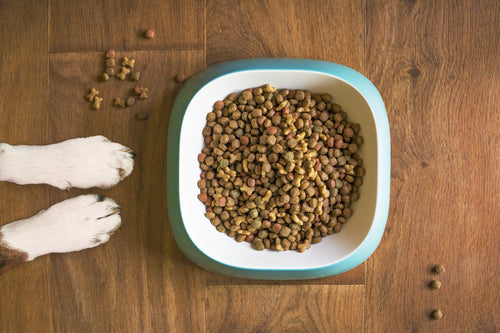Flea and Tick Treatment for Dogs
Fleas are one of the most common blood-sucking parasites on earth. There are more than 2,300 species of them. But dog owners should not worry about such a variety, because the methods of dealing with all species of these insects are the same.
It is generally believed that fleas are completely harmless and do not pose a threat to the health of the animal, but this is not at all the case. The insect bites through the dog's skin and injects saliva into the wound, rewarding the victim with thousands of bacteria. Among them are those that can cause dermatitis, an acute allergic reaction and dangerous infectious diseases.
Also, fleas are the carriers of helminth eggs, or worms. And, of course, it is worth talking about the fact that the dog affected by insect bites is experiencing serious suffering from the itching. She literally does not know a minute of peace, she constantly itches and bites her teeth into the skin, trying to get rid of annoying guests.
Fleas that parasitize dogs can be dangerous to humans. Although they will not live on your pet - it is not comfortable, there is no wool - they bite with great pleasure and with all the ensuing consequences. Since flea eggs do not attach to the skin in any way, they can be found wherever your pet sat or lay. After some time, larvae will hatch from the eggs, which will then pupate, and the adult flea will leave the cocoon as soon as it senses that there is “food” nearby - that is, any warm-blooded creature.

How to Tell if Your Dog Has Fleas?
It is quite easy to see insects on your dog: adults can be seen with the naked eye if you hold your hand against the pet's coat, eggs look like grains of salt, and waste products look like dark peppercorns.
It is impossible to pick off all fleas with your hands - the females lay 30-50 eggs per day. Therefore, in order to rid the dog of parasites, it is necessary to resort to special insecticidal and acaricidal agents for dogs against fleas and ticks, best of all complex, which at the same time will protect your pets from worms. We will tell you more about the best one a little later, after we introduce you to an even more dangerous enemy of dogs.
Keep Your Dog Safe from Ticks
This enemy has a very beautiful name - Babesia, and this is the simplest microorganism, a blood parasite, which causes a disease that is deadly for dogs - piroplasmosis. Its essence is that babesias, getting into the blood of an animal, settle in erythrocytes, which they consider to be the best place for their nutrition and reproduction.
Danger - on the scale of a disaster, babesias multiply rapidly, erythrocyte cells die on a scale that cannot be compared even with a geometric progression, all organs and body systems are damaged, and the animal dies. Mortality from piroplasmosis in the absence of treatment is 98%.
The most paradoxical thing is that babesia are pure parasites and cannot live in the external environment. All their lives they wander from the organism of the carrier, where they wait in the wings, without causing any harm to it, into the blood of the host animal, where they perform their destructive work. Ixodid ticks, which are widespread everywhere, most often act as a means of transport for babesias.
Any representative of the species can introduce deadly parasites into the blood of a dog throughout the entire tick season.
After each walk, you need to feel the animal, concentrating on the places loved by ticks - where the skin is thinner: the ears and the areas around them like the groin and armpits.
How to Remove a Tick from Your Dog?
If you find a tick, do not try to pull it off with your hands - you will simply tear off its head, which, together with its jaws, will remain in the wound and can cause local inflammation. To remove the insect, you should use a special device - a hook with a slot at the end (tick twister), which is sold in any veterinary pharmacy. Grasping the body of the tick with it, you need to carefully remove it with slow twisting movements.
Many believe that it is not necessary to remove insects: they get drunk with blood and they themselves will fall off. This, of course, is true, but there is one significant nuance. If a tick is a carrier of babesia, then they are injected into the blood just at the moment of detachment of the tick: the insect at this moment seems to spit excess blood back into the wound along with its saliva. This usually happens on the second day after sucking, and therefore if you immediately remove the tick, you can avoid infection.
If you find a drunk and fallen tick on the floor, on the dog's bedding, etc., then you can only hope for luck and carefully observe the dog: the first symptoms of piroplasmosis infection appear between 2 to 20 days.
The sooner you notice changes in the animal's behavior - lethargy, fever, dark urine - and see a doctor, the better the chances of salvation. Well, the best thing, of course, is to prevent the mortal danger - to treat the dog from fleas and ticks in advance.

How to Get Rid of Fleas and Ticks on Your Dog?
Nowadays, reliable protection against fleas and ticks for dogs is not difficult. There are a large number of insecticidal acaricidal agents on sale that work equally well on those and other parasites, and differ in the method of application and composition.
One of the most convenient forms is withers drops. The principle of their action is that the active substance enters the sebaceous glands and blood of the animal, making not only a bite, but also contact with its wool poisonous for the tick. It should be noted that the effect of the drug begins 1–2 days after treatment.
Sprays are also effective, but, in our opinion, less convenient to use. During spraying, there is a risk that the drug will get on the mucous membranes or, even worse, into the dog's body if they start to lick the fur. In addition, sprays are difficult in terms of dosage, but they work immediately after application and are indispensable when you need to quickly protect the animal.
Another convenient form is insectoacaricidal collars, they are just as effective as other means, and at the same time provide protection against ticks and fleas for six months (sprays and drops will save one month from the carriers of pyroplasmosis, and three from fleas).
There are also special pills that have ease of use and long-term action (up to six months).
Flea & Tick Medicine for Dogs
All insectoacaride products from good manufacturers are safe for dogs if the instructions are followed, but the bad news is that ticks are protected too! The treatment for dogs from fleas and ticks with the use of antiparasitic agents has been carried out for a long time, and the so-called acquired resistance to them began to be developed in insects. Moreover, this resistance is cross, that is, if a tick is insensitive to one substance, then it does not care about any other from the same group.
This is why veterinarians recommend using two different forms of protection at the same time, such as a spray and drops, drops and collar, or a collar and spray. In this case, the main rule should be observed: in order to avoid overdose, the active substances in these funds must be different! All the necessary information and a detailed description of the composition is contained in the instructions for the drug, but if in doubt, seek advice from your veterinarian.
Flea and Tick Prevention Is Important
So, we see that it is quite possible to reliably protect your dog from fleas, ticks and diseases that they carry. But in the spring, you should pay attention to the general state of health of the animal, because the weakening of the body and the decrease in resistance - not uncommon after a long winter phenomenon - hospitably open the gates to any infections.
Pay attention to the nutrition of your dog, it should not only be complete, but also support the animal's immunity. It is very good if you supplement the pet's diet with probiotics, which perfectly protect the body from external aggressive influences and increase its resistance to infections.
Now on sale are ready-made industrial feeds that contain live probiotics. If you take care not only of the timely application of insecticidal acaricides, but also of the daily diet of your dog, spring and summer will bring you both only joy.









